 Campaign for Wool’s fifth annual Wool Week is celebrating the beauty and versatility of wool for fashion and interiors, and where better to hide from the blustery showers than in the pop-up Interiors Collection gallery in Southwark Cathedral. The curated collection of more than fiftyl wool products features fabrics, flooring and furnishings from the high street to bespoke and designer pieces commissioned for commercial clients. Here are my top ten:
Campaign for Wool’s fifth annual Wool Week is celebrating the beauty and versatility of wool for fashion and interiors, and where better to hide from the blustery showers than in the pop-up Interiors Collection gallery in Southwark Cathedral. The curated collection of more than fiftyl wool products features fabrics, flooring and furnishings from the high street to bespoke and designer pieces commissioned for commercial clients. Here are my top ten:
 Roger Oates Stromness runner (70cm wide x 230cm long) is woven from pure un-dyed Shetland Wool in the UK. Four natural colours, ivory white, light and deep grey and ebony, create bold stripes with a contrasting border. The subtle hues of the un-dyed wool lend themselves perfectly to the geometric and monochrome trends of the moment.
Roger Oates Stromness runner (70cm wide x 230cm long) is woven from pure un-dyed Shetland Wool in the UK. Four natural colours, ivory white, light and deep grey and ebony, create bold stripes with a contrasting border. The subtle hues of the un-dyed wool lend themselves perfectly to the geometric and monochrome trends of the moment.
 The Røros Tweed storm blanket (120x180cm, £195) from Toast, also uses the natural monochrome tones of un-dyed wool, this time from Norway. Røros, established as a mining town in 1646, is on UNESCO’s list of World Heritage Sites. In 1789, when the director of the mine, Peder Hiort, died childless, he bequeathed his entire fortune to a foundation set up to provide training to the poor in handicraft and textile production. Røros Tweed was established in 1940 to sell handmade textiles, and continues to ensure the whole process from raw wool to finished product stays in Norway.
The Røros Tweed storm blanket (120x180cm, £195) from Toast, also uses the natural monochrome tones of un-dyed wool, this time from Norway. Røros, established as a mining town in 1646, is on UNESCO’s list of World Heritage Sites. In 1789, when the director of the mine, Peder Hiort, died childless, he bequeathed his entire fortune to a foundation set up to provide training to the poor in handicraft and textile production. Røros Tweed was established in 1940 to sell handmade textiles, and continues to ensure the whole process from raw wool to finished product stays in Norway.
 Mary Goodman‘s Seating Spheres, launched at Tent London, are a mix of British Swaledale and Herdwick wools. The spheres are made to order and are a fun addition to any home office.
Mary Goodman‘s Seating Spheres, launched at Tent London, are a mix of British Swaledale and Herdwick wools. The spheres are made to order and are a fun addition to any home office.
 For a less energetic seating solution, Galvin Brothers (Completely) Imperfect Day Bed, upholstered in Melton Earth Cobalt and Boutique Islington grey from Abraham Moon would be a very sophisticated place to recline with a good book or simply find a moment of calm. Firm, flat and fit for a daytime ‘power-nap’, it is also a single bed worthy of any overnight guests. Made of solid oak and finished with Danish oil, the bed (180 x 44 x 80cm, £1,985) has the Galvin Brothers signature turned leg. Their partnership with local supplier Abraham Moon, established in 1837 and one of one of Britain’s last remaining vertical woollen mills, means this piece of furniture is Yorkshire through and through.
For a less energetic seating solution, Galvin Brothers (Completely) Imperfect Day Bed, upholstered in Melton Earth Cobalt and Boutique Islington grey from Abraham Moon would be a very sophisticated place to recline with a good book or simply find a moment of calm. Firm, flat and fit for a daytime ‘power-nap’, it is also a single bed worthy of any overnight guests. Made of solid oak and finished with Danish oil, the bed (180 x 44 x 80cm, £1,985) has the Galvin Brothers signature turned leg. Their partnership with local supplier Abraham Moon, established in 1837 and one of one of Britain’s last remaining vertical woollen mills, means this piece of furniture is Yorkshire through and through.
 Bailey Hills’ Comati Stripe Metallic cushion has the striking motif digitally printed on to 100% wool twill. The metallic shimmer is the perfect complement to Jonathan Adler‘s luxurious handcrafted Ingmar Chair (£2,250) with its shearling-lined seat. What an indulgence.
Bailey Hills’ Comati Stripe Metallic cushion has the striking motif digitally printed on to 100% wool twill. The metallic shimmer is the perfect complement to Jonathan Adler‘s luxurious handcrafted Ingmar Chair (£2,250) with its shearling-lined seat. What an indulgence.  Kit Kemp for Christopher Farr Cloth’s folklore embroidered fabric, 100% wool with cotton embroidery (£280/m), is luxury with a colourful and artisanal flair.
Kit Kemp for Christopher Farr Cloth’s folklore embroidered fabric, 100% wool with cotton embroidery (£280/m), is luxury with a colourful and artisanal flair.
The Tetrahedron and Falling Cubes cushions (£95) made for Pentreath and Hall by Fine Cell Work, a social enterprise that trains prisoners in paid, skilled, creative needlework, bring colour to geometric designs. Georgia Bosson’s Skeleton ‘Crosses’ cushion is made from industrial wool felt waste material overlaid on line n. From £55 each, the cushions are limited edition, and by the nature of their materials unique.
n. From £55 each, the cushions are limited edition, and by the nature of their materials unique.
From the decorative to the utilitarian for the last of my picks, Hey-Sign’s collection  of laundry baskets made from 100% wool felt with 30°, 60°, 90° (35 × 27 × 75 cm) motif.
of laundry baskets made from 100% wool felt with 30°, 60°, 90° (35 × 27 × 75 cm) motif.
Wool’s versatile aesthetic appeal is long-lasting, as it is a resilient performance fibre. Wool has many virtues being natural, renewable and biodegradable (if pure wool). It is also multi-climatic, keeping you warm in winter, and breathable to keep you cool in summer. In the home, wool is an effective insulator with anti-bacterial and hypoallergenic properties and is naturally fire-retardant.
 With such a strong British wool heritage, I look forward to an exhibition that captures stories from native breeds and traditional crafts to outstanding contemporary design and innovative materials.
With such a strong British wool heritage, I look forward to an exhibition that captures stories from native breeds and traditional crafts to outstanding contemporary design and innovative materials.
The Interiors Collection is on display at London’s Southwark Cathedral during Wool Week – open from the 5th – 12th October 10am – 7pm daily (8pm on Thursday). Admission is free. If you can not make it there, then have a look at OneWool, the new online gallery showcasing the largest collection of wool interiors products.
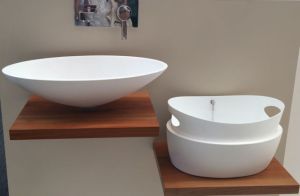
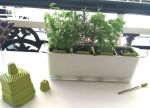
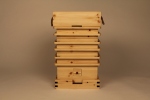


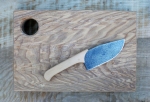
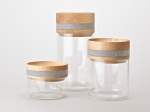 Kai’s knives would be perfectly complemented by Tom Hutchinson’s considered and elegant
Kai’s knives would be perfectly complemented by Tom Hutchinson’s considered and elegant 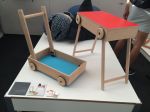
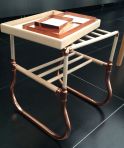

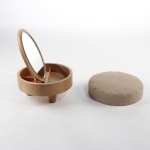
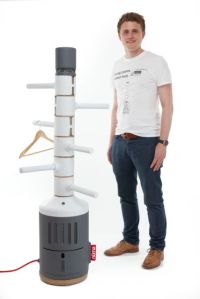
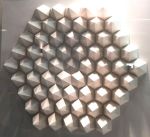










 y are proud of their commitment to responsible raw material procurement and manufacturing processes. Forbo use Life Cycle Assessment to evaluate their products’ environmental footprint, before, during and after production. The info graphic, Creating Better Environments shares some of the highlights. For example, marmoleum (linoleum) is made from 97% natural materials with natural antibacterial properties, contains 43% recycled content, has total VOC 30 lower than the norm and CO2 emissions 50% than other resilient floorings. It could soon be on the floor of the family bathroom!
y are proud of their commitment to responsible raw material procurement and manufacturing processes. Forbo use Life Cycle Assessment to evaluate their products’ environmental footprint, before, during and after production. The info graphic, Creating Better Environments shares some of the highlights. For example, marmoleum (linoleum) is made from 97% natural materials with natural antibacterial properties, contains 43% recycled content, has total VOC 30 lower than the norm and CO2 emissions 50% than other resilient floorings. It could soon be on the floor of the family bathroom! 
















 ck to the New Craftsmen, where my eye was caught by a
ck to the New Craftsmen, where my eye was caught by a




